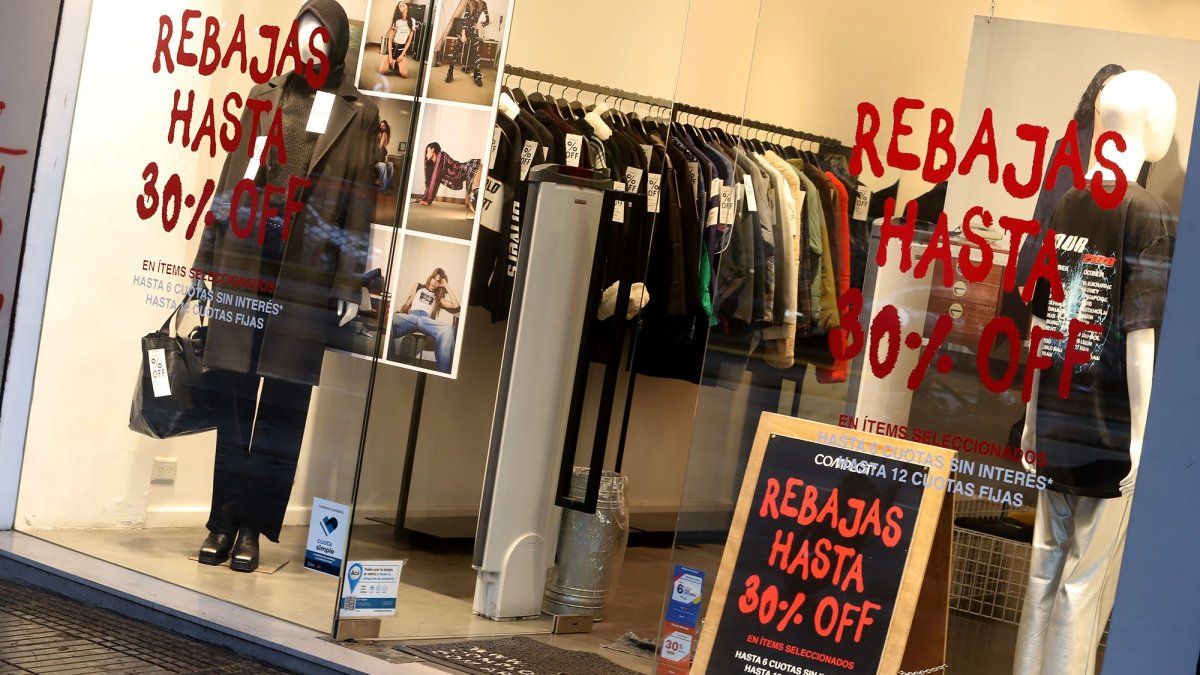As demonstrated by the latest INDEC report, the private consumptionin absolute terms, it is at record levels. In June it grew 12.1% interannual, thus completing nine months of consecutive increases, according to the new Private Consumption Index (ICP-UP) of the University of Palermo. In this way, the indicator accumulated in the first semester an increase in 14.9% interannual, thus registering your higher level since 2017.
This information is conditioned with the last data of INDEC that showed that private consumption in absolute terms during the first quarter was in record values. However, these figures are not accompanied by an improvement in employment or salaries -despite the fact that in May they rebounded continue with a loss of pronounced purchasing power. In that line, analysts highlight that the exchange rate appreciation, as well as the import boom and the trips abroad would be determining factors for this new dynamic consumption.
Thus, in the disaggregated analysis, an increasingly fragmented consumption is observed, where the expansion is concentrated in higher elasticity, mainly associated with the middle and high classes, while the essential basic goods show signals of stagnation or fall.
Private consumption grew thanks to durable goods and access to credit
The report emphasizes that the rise was motorized by the durable goodsas cars and Motorcycleswhich registered very high recovery rates in the semester. In turn, the financing It also appears as one of the main drivers: personal loans grew 202.1% year -on -year and the Credit card purchases increased 72.1% In the year.
In semi -durable goods, it stands out toy store, with accumulated growth of 54.3%, and the clothing and footwear consumptionwhich maintains sustained increases since the end of 2024.
On the side of the services, restaurants It grew 3.5% year-on-year in May, for the third month, although even in the accumulated it shows a negative variation (-1.6%); and the internal tourism He showed improvements in both travelers and overnight.
consumption
The countercara of the consumption of the highest classes is the heterogeneity and weakness of mass consumptionespecially basic foods. May’s latest data reveal year -on -year falls in Vaccine meat and aviancentral products of the basic basket, reflecting the impact of the loss of purchasing power on the lower income sectors. In turn, Purchases in supermarkets marked a monthly decline of 1.2%. Although, as well as the face -to -face sale, also E-commerce grows (+14.6% in June), as shown in the consultant’s data Scentia.
This point is key when linking it with the recent evolution of real wages and poverty. According to the last official data, income continues to lagged accumulated inflation (-5.5% real below November 2023), while poverty remains close to 40%. Thus, the recovery of private consumption shows a regressive and unequal profile, where lower -income households are increasing food and Basic serviceswithout being able to access durable or recreational goods.
Rising consumption for exchange appreciation and imports
The economist Martín Carro He explained to the scope that much of the consumption in the last year had to do with the “strong exchange appreciation“, that it lowers imported and durable goods -The last also related to savings- which are the most consumed and those who helped, together with the creditsto the index remained up.
“Private consumption is not necessarily related to the level of salaries, which is far from their record levels. First, because not only are the employees who consume, but more important than that has to do with what is the aggregate consumption and not necessarily of basic products. A car that costs $ 20 million, is worth much more than the consumption of a milk SACHET, can be consuming less sachet of milk, but two more cars and consumption will grow Because it is weighted precisely for its price and for the price ratio, that is, it weighs much more expensive goods in total consumption than cheap goods, “said Car.
In that line, Daniel Schteingart, of Fundar, added that the “Foreign Tourism record” thanks to the cheap dollar, which is another consumption of the upper middle classes. And complemented that the increase in sales of durable goods was due to the fact that these products They rose well below inflation and for the return of credit in installments after inflationary deceleration.
By continuing with the explanation, the economist stressed that although the levels of consumption are similar, as well as the product (the level of activity of the GDP of the first quarter of 2025 is also very similar to the same period of 2018), there is a “stagnation”: “Since 2018 we come with a real -similar real exchange rate, which makes the consumption of imported ones similar, but there is 8% more population, therefore the per capita consumption is quite lower.”
More consumption, more credit: A solid recovery?
The sustained growth of private consumption is good news in macroeconomic terms, but its composition arouses questions about the sustainability and distribution of that rebound.
The rebound in consumption in cars, motorcycles, clothing and recreation mainly benefits sectors with greater purchasing capacity, while restrictions on households with lower purchasing power in everyday life persist.
Source: Ambito




